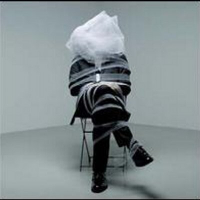New UCI calendar
Comments
-
From that shot, it doesn't look so much like his head hits the gantry, which is what I thought at first and couldn't see ending well. Especially when it was said he had a broken palate as I couldn't see how that happened without some associated head injury
Anyone know what recovery from a broken palate is like?We're in danger of confusing passion with incompetence
- @ddraver0 -
Is there any precedent for this? I can't think of any... kicked off race yes, but banned for rest of racing season?orraloon said:Season ban coming for DG? Can't say doesn't deserve.
0 -
Specifics are a bit hazy now, but I had surgery on Xmas Day 2013 to put my palate/upper jaw back together again, after my cycling RTA on 23/12/13. Other breaks were dealt with the following week.ddraver said:Anyone know what recovery from a broken palate is like?
Titanium plates were inserted via my upper gum under general, my jaw was then wired together for something like 2/3 weeks and I was on a strictly soft diet for at least 3 months, with essential regular salt water rinses.
I got back on a bike again around May 2014 iirc, but that mainly was due to complications with my right hand and wrist fractures from the accident, which resulted in ~5 weeks Mon-Fri at Salisbury NHS' Wessex Rehab.
================
2020 Voodoo Marasa
2017 Cube Attain GTC Pro Disc 2016
2016 Voodoo Wazoo0 -
twotoebenny said:
Is there any precedent for this? I can't think of any... kicked off race yes, but banned for rest of racing season?orraloon said:Season ban coming for DG? Can't say doesn't deserve.
I don’t think what Groenewegen did is all that different to a lot of dodgy sprinting lines.
The difference is obviously the outcome of the crash.
0 -
Normally that would have been a really bad crash caused by groenewegen, but he would have continued moving forwards. The barriers just evaporating on contact turned it into a horror show.0
-
Just heard about this and saw the footage. The front on camera supports McEwan's point of view. Not great, comes off his line albeit not very sharply but quite a standard sprint crash deserving of a DQ but the outcome made more severe by the barriers disintegrating.
However, the overhead shot is pretty damning. Dylan's elbows go out as soon as he senses he is getting passed and he moves further over after his elbow makes contact so he knew there was a rider there.
Sure, it's all happening at very high speed but if you listen to a sprinter talk about a win they always seem to have been aware of exactly what it happening. To me the move looked deliberate and while I doubt causing a crash was intended it was an obvious likelihood of the move.0 -
The problem is that sprinters never seem to consider the consequences of their actions, until it directly impacts them.rick_chasey said:twotoebenny said:
Is there any precedent for this? I can't think of any... kicked off race yes, but banned for rest of racing season?orraloon said:Season ban coming for DG? Can't say doesn't deserve.
I don’t think what Groenewegen did is all that different to a lot of dodgy sprinting lines.
The difference is obviously the outcome of the crash.
Every time a sprinter opts to take an irregular line they are gambling.
Usually the stakes are: Get a result, or relegation to the back of the bunch.
In certain cases, the stakes are raised to DQF, by a crash and in a very few, when the outcome is extreme, to a ban.
This was the worst example of extreme, I've seen.
"Science is a tool for cheaters". An anonymous French PE teacher.0 -
A very nice piece on Fabio Jakobsen, written by Ned Boulting yesterday evening, after his stint at the Milan-Torino:
https://www.theroadbook.co.uk/2020/08/05/to-fabio-ned-boulting/"Science is a tool for cheaters". An anonymous French PE teacher.0 -
Thinking about the number is accidents in sprints which are either caused by or made worse by the barriers, i appreciate the organisers are trying to get spectators as close to the action as possible, but surely now safety of the riders must start to be given priority over everything else?!
I wonder if there could be a way of implementing similar style netting used on alpine downhill skiing?
I know that's a very different situation but the speeds involved are not that dissimilar and the netting dissipates the energy, and has proven to be hugely effective.0 -
Apparently he was operated on for 5 hours, until 5:30 am.
The most serious injuries appear to be the craniofacial injuries.
Hopefully there will be an attempt to wake him out of his coma today.
Talk of plastic surgery too."Science is a tool for cheaters". An anonymous French PE teacher.0 -
I'm not convinced that netting - that can get caught in things like pedals etc - is the answer here, given we've just seen what happens when the barrier collapses and gets wrapped up with the rider before catapulting them across the road. We've also seen crashes (was it last year's Giro?) where riders have got hung up on printed mesh advertising over the tops of barriers.
The point of netting in skiing is it slows down the skier over a longer period of time than, say, a tree does. That's not the situation here where a rider would normally slide down the road.
McEwan makes a good point, and one that I was thinking about last night after I logged off. Is it cynical of me to wonder if the UCI is making a lot of noise about Groenewegen in order to keep the media highlight there and not on the state of the course, which on the face of it was not fit for purpose? Lot of vested interests in focusing on the rider and not the organisers. Not to excuse Groenewegen - he's absolutely culpable for this and a decent length ban might well concentrate a few other sprinter's minds about what they're doing - but there are other aspects of this that urgently need addressing.1 -
I appreciate that, but netting is proven to be effective at dissipating energy and protecting (to some degree) competitors involved in high speed crashes.Lanterne_Rogue said:I'm not convinced that netting - that can get caught in things like pedals etc - is the answer here, given we've just seen what happens when the barrier collapses and gets wrapped up with the rider before catapulting them across the road. We've also seen crashes (was it last year's Giro?) where riders have got hung up on printed mesh advertising over the tops of barriers.
The point of netting in skiing is it slows down the skier over a longer period of time than, say, a tree does. That's not the situation here where a rider would normally slide down the road.
There must be a way of adapting it or designing something for cycle racing as the barriers clearly are in need of urgent review and replacement.
Rider safety is all that matters (and spectators, but they can always be better protected by being positioned slightly further away from the roadside)
0 -
In a 'normal' sprint crash that's possibly a collarbone and cuts and bruises. What made that worse is the extra 15-20km/h from the downhill allied to the totally inappropriate barriers & location. I'm not excusing Groenewegen in any way, he was reckless and it was obviously dangerous riding. But look at the finish set-up: flimsy barriers held in place by concrete blocks and backing on to a railway line.


I mean 4FS. We're asking these guys to risk their health every time they race but the respect they're shown by organisers is appalling.
Here's a shot of the barriers, at last year's event (following the death of Bjorg Lambrecht, I might add):/origin-imgresizer.eurosport.com/2019/08/06/2651271-54847730-2560-1440.png)
Criminally negligent. Sort it out 4FS.
It's only a bit of sport, Mun. Relax and enjoy the racing.0 -
That's pretty much how I see it, an almost catastrophic failure of the surroundings. There's been a lot of social media pointing at UCI to improve finishes. Their risk assessment process certainly seems to need looked at. As with all things in life it usually takes an "event" for that to happen!rick_chasey said:twotoebenny said:
Is there any precedent for this? I can't think of any... kicked off race yes, but banned for rest of racing season?orraloon said:Season ban coming for DG? Can't say doesn't deserve.
I don’t think what Groenewegen did is all that different to a lot of dodgy sprinting lines.
The difference is obviously the outcome of the crash.0 -
And made more severe by the fact it was a downhill sprint, which is just daft.Pross said:Just heard about this and saw the footage. The front on camera supports McEwan's point of view. Not great, comes off his line albeit not very sharply but quite a standard sprint crash deserving of a DQ but the outcome made more severe by the barriers disintegrating.
However, the overhead shot is pretty damning. Dylan's elbows go out as soon as he senses he is getting passed and he moves further over after his elbow makes contact so he knew there was a rider there.
Sure, it's all happening at very high speed but if you listen to a sprinter talk about a win they always seem to have been aware of exactly what it happening. To me the move looked deliberate and while I doubt causing a crash was intended it was an obvious likelihood of the move.
It could have been 10-15km/h slower which would have made a big difference.0 -
This is an interesting point about the barriers, as there is a lot of knee jerk reaction on social media, coming with the benefit of hindsight.RichN95. said:On the subject of the barriers, I've seen someone note that usually there would be a crowd behind the barriers along their length leaning over them and thereby making them more sturdy.
I'm not convinced that the outcome would have been better had they been of the more traditional style.
If downhill sprints are to be suddenly deemed dangerous, because they are ridden at 80kph, where does that leave the average Alpine, Pyrenee and Dolomite descent?
The fact is that finished has been used for a number of years, without incident.
The reason being the road is wide and straight.
Obviously yesterday, it was quite wide enough for Groenewegen."Science is a tool for cheaters". An anonymous French PE teacher.0 -
There's quite a big difference between a pack sprinting at 80kph and riders racing down a mountain, but yes, descending is dangerous as well.blazing_saddles said:
If downhill sprints are to be suddenly deemed dangerous, because they are ridden at 80kph, where does that leave the average Alpine, Pyrenee and Dolomite descent?
As for the barriers etc. - I'm not an expert on them by any means, but they shouldn't disintegrate like that. I think it's fair to comment that we've seen far too many unsafe finishes in recent recent years - just last month there was one with a metal pole in the middle of the road on the last corner. The UCI needs a clear standard and to make sure it's enforced. It shouldn't be up to teams to protest to e.g. get a beachfront team time trial with sand all over the course removed.
I'm also unsure what the hell the riders union is doing about any of this, whatever it is doesn't seem to be working.
Warning No formatter is installed for the format1 -
Cavendish going into the barriers in 2017 with traditional barriers - while it was horrific, the forward momentum was not just stopped. The way he hit the barriers was almost identical to Jakobsen.blazing_saddles said:
This is an interesting point about the barriers, as there is a lot of knee jerk reaction on social media, coming with the benefit of hindsight.RichN95. said:On the subject of the barriers, I've seen someone note that usually there would be a crowd behind the barriers along their length leaning over them and thereby making them more sturdy.
I'm not convinced that the outcome would have been better had they been of the more traditional style.
If downhill sprints are to be suddenly deemed dangerous, because they are ridden at 80kph, where does that leave the average Alpine, Pyrenee and Dolomite descent?
The fact is that finished has been used for a number of years, without incident.
The reason being the road is wide and straight.
Obviously yesterday, it was quite wide enough for Groenewegen. https://www.youtube.com/watch?v=mgwZsxukSL8 1
https://www.youtube.com/watch?v=mgwZsxukSL8 1 -
blazing_saddles said:
If downhill sprints are to be suddenly deemed dangerous, because they are ridden at 80kph, where does that leave the average Alpine, Pyrenee and Dolomite descent?
People aren't racing side by side for a fixed point on a descent. They're usually lined out without riders elbowing for position.
True, but does that mean it's safe enough? The incident yesterday showed that it obviously isn't. You might see a crash in a sprint where there isn't such an egregious piece of dangerous riding, but if a rider hit those barriers at that speed from something more innocent the outcome might well be the same.blazing_saddles said:The fact is that finish has been used for a number of years, without incident.
Sprinting is an inherently dangerous activity, and I appreciate there's only so much an organiser can do to prevent serious injury but it's obvious the set-up fell short of what can be reasonably expected. You might get a similar outcome with better barriers, but I'd be surprised. The TDF style barriers at least don't generally disintegrate on impact and let riders through so easily.It's only a bit of sport, Mun. Relax and enjoy the racing.0 -
Paint a hard shoulder on the road, DQ anyone who enters or who pushes someone into it.0
-
There's no excuse for Groenewegen's riding, but absolutely none for the lack of consideration for rider safety there. It might well not have had an incident previously but the combination of increased speed and extremely poor barriers mean if something does happen it will be worse than normal.It's only a bit of sport, Mun. Relax and enjoy the racing.0
-
TheBigBean said:
Paint a hard shoulder on the road, DQ anyone who enters or who pushes someone into it.
Won't that just make the road effectively narrower.Twitter: @RichN950 -
Yes. Width of the road is less of an issue than where the riders are riding though. Groenewegen would not have been where he was if he was risking a DQ. Jakobsen would either have been trapped between Groenewegen and the DQ line with a crash far less likely, or he would have been on the other side not wanting a DQ either.RichN95. said:TheBigBean said:Paint a hard shoulder on the road, DQ anyone who enters or who pushes someone into it.
Won't that just make the road effectively narrower.0 -
Some of us have spent the past couple of months debating how things should be not be allowed to stand unchallenged, simply because that's the way it has always been in the past. That, from time to time, things should be re-evaluated.
This seems to be the current focus of this debate, both in terms of the finish and the barrier composition.
As a result of yesterday's accident, I suspect that the organisers will go for the d'Arenberg option.
What I don't see is any desire to fit rider culpability into this new safety evaluation.
"Science is a tool for cheaters". An anonymous French PE teacher.0 -
Rider culpability has always been enforced through DQs, fines, suspensions but the very nature of the sport means you will see crashes in sprints. What you can do though is try to minimise the impact of incidents like this through better infrastructure and route planning. In no way was that good enough yesterday and very often leaves a lot to be desired.blazing_saddles said:This seems to be the current focus of this debate, both in terms of the finish and the barrier composition.
As a result of yesterday's accident, I suspect that the organisers will go for the d'Arenberg option.
What I don't see is any desire to fit rider culpability into this new safety evaluation.
Genuine question: what's the d'Arenberg option? Do you mean the way the Trouee d'Arenberg is fenced?
The UCI are in a cleft stick here, I understand that, they're desperate to hang on to races and organisers so are always going to be squeamish about criticising organisers and mandating minimum standards of safety at races. But they must try and do more.
It's only a bit of sport, Mun. Relax and enjoy the racing.0 -
Until 1998 the entry to the Arenberg pavé was slightly downhill, then Johan Museeuw crashed, shattering his knee cap. He got a gangrene infection which nearly forced doctors to amputate his left leg.salsiccia1 said:
Rider culpability has always been enforced through DQs, fines, suspensions but the very nature of the sport means you will see crashes in sprints. What you can do though is try to minimise the impact of incidents like this through better infrastructure and route planning. In no way was that good enough yesterday and very often leaves a lot to be desired.blazing_saddles said:This seems to be the current focus of this debate, both in terms of the finish and the barrier composition.
As a result of yesterday's accident, I suspect that the organisers will go for the d'Arenberg option.
What I don't see is any desire to fit rider culpability into this new safety evaluation.
Genuine question: what's the d'Arenberg option? Do you mean the way the Trouee d'Arenberg is fenced?
The UCI are in a cleft stick here, I understand that, they're desperate to hang on to races and organisers so are always going to be squeamish about criticising organisers and mandating minimum standards of safety at races. But they must try and do more.
Now, it's always slightly uphill.
"Science is a tool for cheaters". An anonymous French PE teacher.1 -
Cheersblazing_saddles said:
Until 1998 the entry to the Arenberg pavé was slightly downhill, then Johan Museeuw crashed, shattering his knee cap. He got a gangrene infection which nearly forced doctors to amputate his left leg.salsiccia1 said:
Rider culpability has always been enforced through DQs, fines, suspensions but the very nature of the sport means you will see crashes in sprints. What you can do though is try to minimise the impact of incidents like this through better infrastructure and route planning. In no way was that good enough yesterday and very often leaves a lot to be desired.blazing_saddles said:This seems to be the current focus of this debate, both in terms of the finish and the barrier composition.
As a result of yesterday's accident, I suspect that the organisers will go for the d'Arenberg option.
What I don't see is any desire to fit rider culpability into this new safety evaluation.
Genuine question: what's the d'Arenberg option? Do you mean the way the Trouee d'Arenberg is fenced?
The UCI are in a cleft stick here, I understand that, they're desperate to hang on to races and organisers so are always going to be squeamish about criticising organisers and mandating minimum standards of safety at races. But they must try and do more.
Now, it's always slightly uphill.It's only a bit of sport, Mun. Relax and enjoy the racing.0







